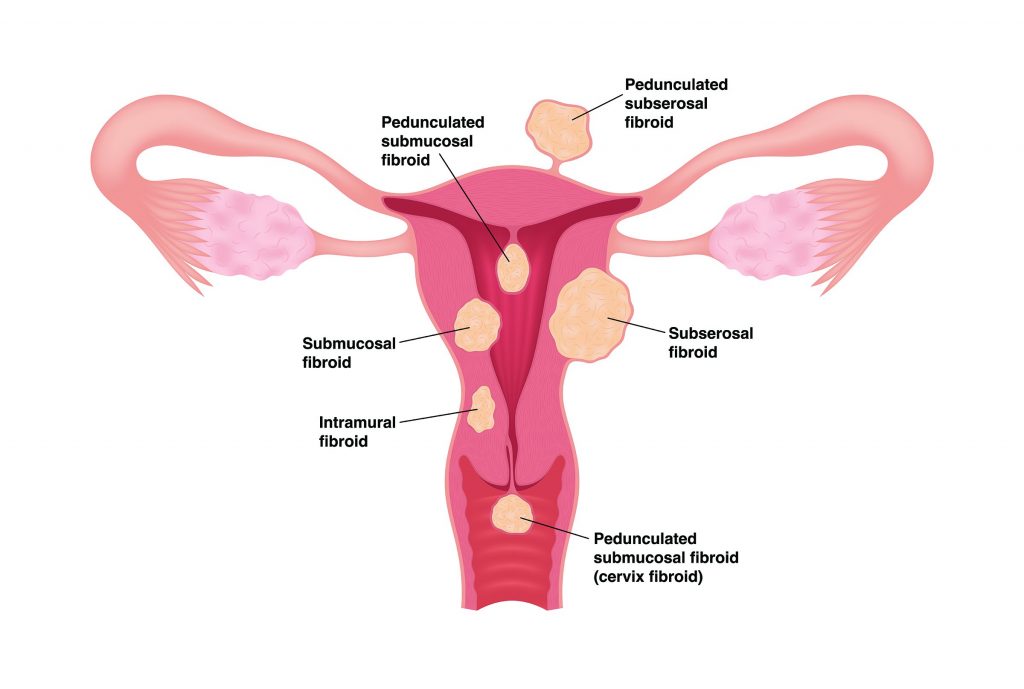Women don’t always feel compelled to seek Houston fibroids treatment immediately. Some women may assume, “I can live with this,” when they have no symptoms, discovered the problem during a routine pelvic exam, or the pain is tolerable. The possibility of watchful waiting exists—but not for too long.
If uterine fibroids grow further, they may become more problematic. There are a number of causes for fibroid growth. Hormones are the most important of these development agents. The Office on Women’s Health claims that estrogen and progesterone boost the uterine lining’s development during each menstrual cycle in order to prepare for pregnancy.
Growing fibroids, like any medical disease, might worsen your symptoms and prevent you from going about your everyday activities if you don’t get treatment. Also, Houston fibroids treatment is simpler and more efficient the earlier you consider your alternatives without running the risk of adverse effects that could change your life.
You definitely have the power to take charge of your own health, so keep in mind that information equals empowerment.
What Size Fibroids Should Be Treated?
Between the ages of 35 and 54, researchers estimate that 70 to 80 percent of all women will acquire fibroids. Yet fibroids can develop in women as early as 35 and up until menopause. These benign tumors grow from the muscle tissue of your uterus and frequently change in size. They also multiply. For this reason, Houston fibroids treatment is crucial. As fibroids grow and either twist or start to press against organs, what were first modest symptoms or no symptoms, become more uncomfortable. The result is a variety of painful symptoms that impair your quality of life and may trigger consequences, such as:
- Infertility
- Pregnancy complications, including miscarriages
- Anemia from heavy and irregular menstrual bleeding
- Urinary tract infections
What size fibroids should be treated, then, when it comes to Houston fibroids treatment? Every size. And, ideally, all of them. It’s important to keep in mind that fibroids do not just increase in size and number. They can develop:
- Inside the uterine walls (intramural fibroids)
- Just underneath the uterine lining (submucosal fibroids)
- Outside the uterus (subserosal fibroids), or
- On a long stalk inside or outside of the uterus (pedunculated fibroids)

The weight and placement of these fibroids lead to progressively uncomfortable symptoms. For instance, symptoms can include painful sex, back and leg cramps, intense cramping, pelvic discomfort and pressure, and more. They can also include heavy menstrual bleeding.
What Are Common Houston Fibroids Treatment Procedures?
Typically, during a routine pelvic exam, your doctor or gynecologist can detect any unusual changes in the shape of your uterus. To confirm if you have fibroids, they can also utilize your family history, symptoms, and results from an ultrasound or MRI. Following a diagnosis, your physician can suggest one of the following:
Uterine Fibroid Embolization (UFE)
Technically, UFE does not remove fibroids the same way surgery does. Nevertheless, it is a minimally invasive technique that stops blood flow to all fibroids, forcing them to shrink and eventually die. UFE is a less invasive, less risky alternative to surgery that is also quicker than some of the other treatments. For more information about UFE, continue reading below.
Hysterectomy
The procedure of choice in the past to remove fibroid was a hysterectomy. It is still employed today and can be quite successful. Invasive surgery is something many women would rather avoid, though. A hysterectomy involves removing all or a portion of a woman’s uterus. Her ovaries and fallopian tubes may also be removed in specific circumstances. Your body will never be the same after a hysterectomy, and recovery takes longer.
Myomectomy
A myomectomy is a surgical treatment that needs to be carefully evaluated, much like a hysterectomy. The objective is to get rid of uterine fibroids while keeping the uterus intact. The preferred method for women who desire to become pregnant is this one. Unfortunately, it makes it impossible to deliver a child vaginally in the future. After myomectomy, the majority of gynecologists insist on C-sections. The manner in which this operation is carried out depends on the size and location of the fibroids.
Acessa
A tiny probe is inserted into a fibroid during the Acessa technique, where it is heated to cause the tumor to rupture. When there are only a few fibroids, this procedure can be beneficial. Acessa is not a viable option if you have numerous big fibroids or fibroids that are difficult to access. Also. several insurance providers do not cover it.
Endometrial Ablation
Usually, severe bleeding comes from the inner lining of the uterus. By inserting a small tool through the cervix into the uterus and applying heat, laser, electricity, microwaves, or freezing, the endometrial lining can be eliminated. The drawback of endometrial ablation is that it is dangerous to conceive after having it. Moreover, it won’t get rid of any fibroids.
Free Check List
Interested in Houston fibroids treatment without surgery? Download a free check list to see if you are a candidate for UFE
Houston Fibroids Treatment without Surgery: Uterine Fibroid Embolization (UFE)
What could be better for Houston fibroids treatment than a minimally invasive technique that eliminates your fibroid symptoms while requiring no hospitalization, no incision, and a considerably speedier recovery period? For many women, uterine fibroids embolization (UFE) is a low-risk and effective alternative to surgery. As a result, more women are selecting this as their preferred course of therapy every day after consulting with their doctor.
X-ray guidance used during UFE identifies the blood vessels supplying your fibroids. The blood supply to the fibroids is blocked by injecting tiny particles into the blood vessels. Fibroids shrink and die when there is no more blood flow. You will be asleep throughout the operation, which will take around an hour. Light activities can be resumed as soon as you’re ready. In 7 to 10 days, most women are back at work. More than 90% of female patients who undergo uterine fibroids embolization report a reduction in their symptoms. This also involves lighter cycles and reduced pelvic pain.

After UFE, our patients are so happy to be able to return to work and their regular life activities quickly and with less pain. Read our Houston patient testimonial reviews to hear about their experiences.
Get a FREE Phone Screening with Fibroid Institute Houston
Do you have questions about Houston fibroids treatment options? Our patients prefer uterine fibroid embolization (UFE), the gold standard in non-surgical fibroid treatment for pedunculated fibroids and others. Request a free 10-15 minute phone screening to determine if you are eligible. After the screening, if you are a good candidate for UFE, you can schedule your consultation with Dr. John Fischer and get your questions answered.
Telehealth and/or in-office appointments are available for consultations. With over 20 years and 3,500 UFE procedures since 2000, including one of the first UFEs in Houston, John H. Fischer. MD is among the most experienced doctors in Houston area for UFE fibroid treatment without surgery. To learn more or to schedule, call 713-903-3733 or complete the form below.
Fibroid Institute Houston serves the South Texas area including Houston, Sugar Land, Katy, Webster, Clear Lake, The Woodlands, Universal City, Spring, Kingwood, Stafford, Conroe, Texas City, Cypress, League City, Bellaire and more.
Prior to starting any new treatment or if you have questions regarding a medical condition, always seek the advice of your doctor or other qualified health provider. This information is not a substitute for professional medical advice.

